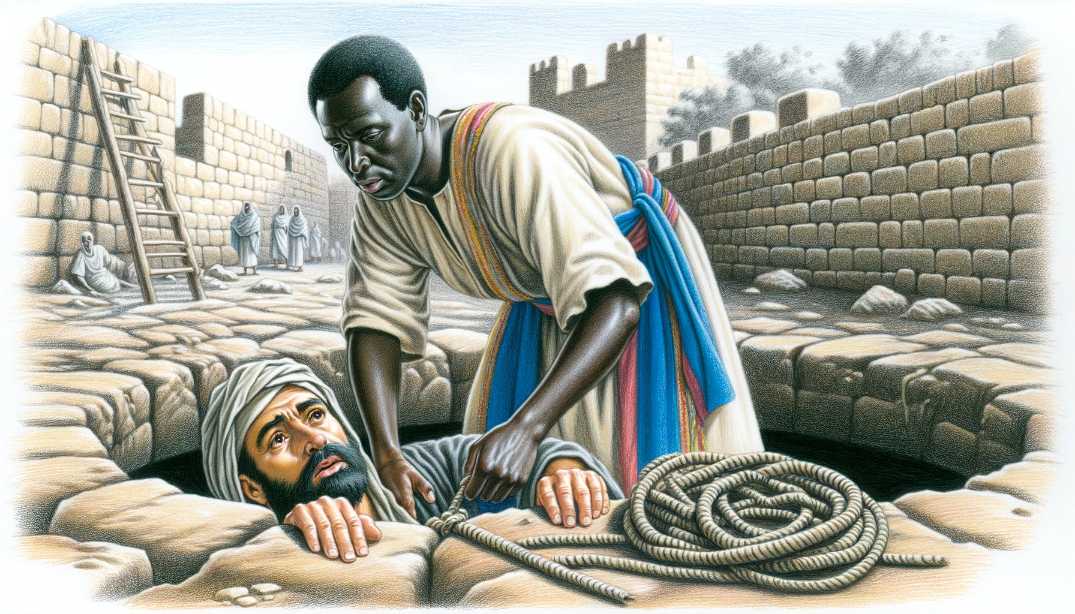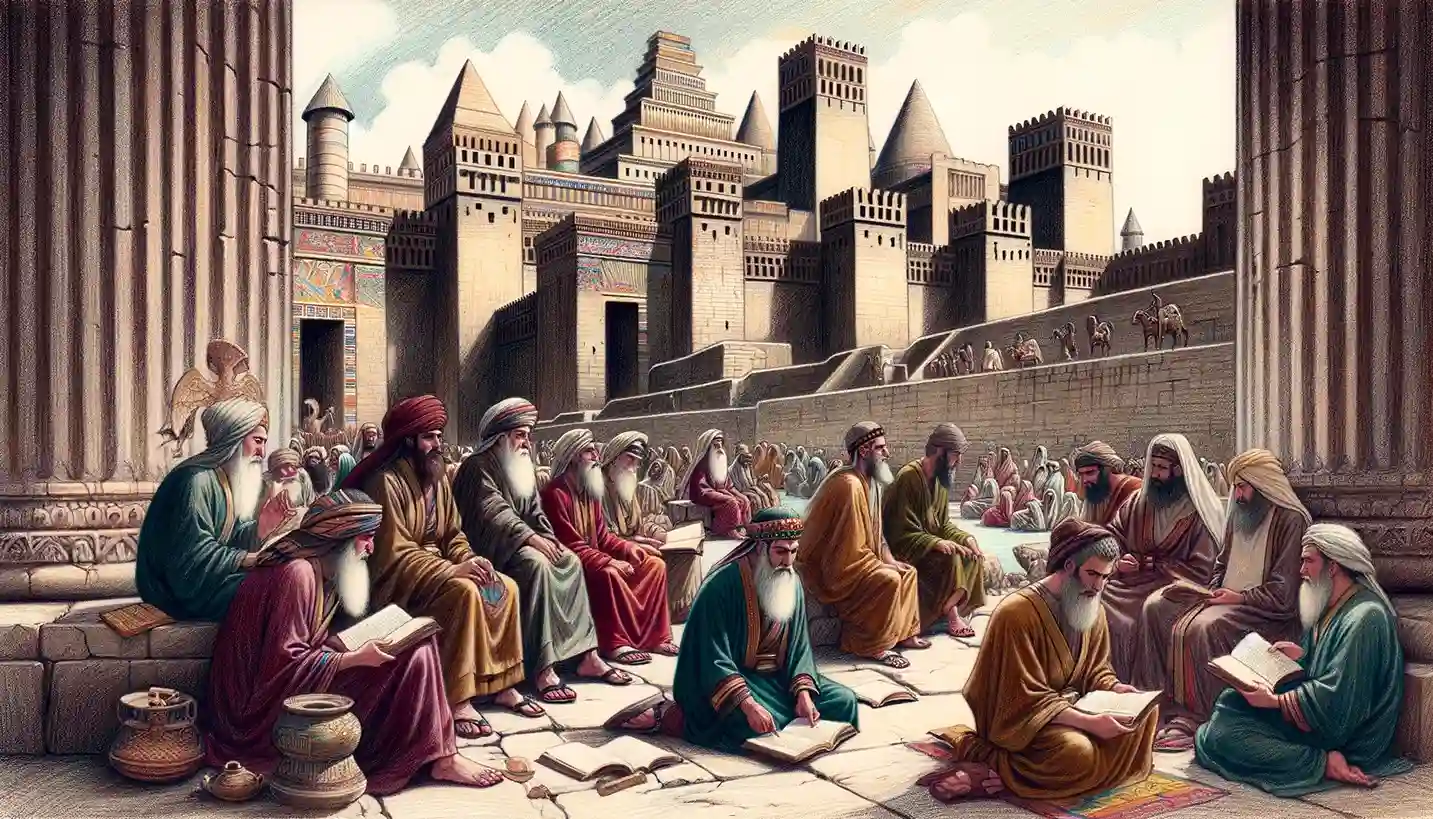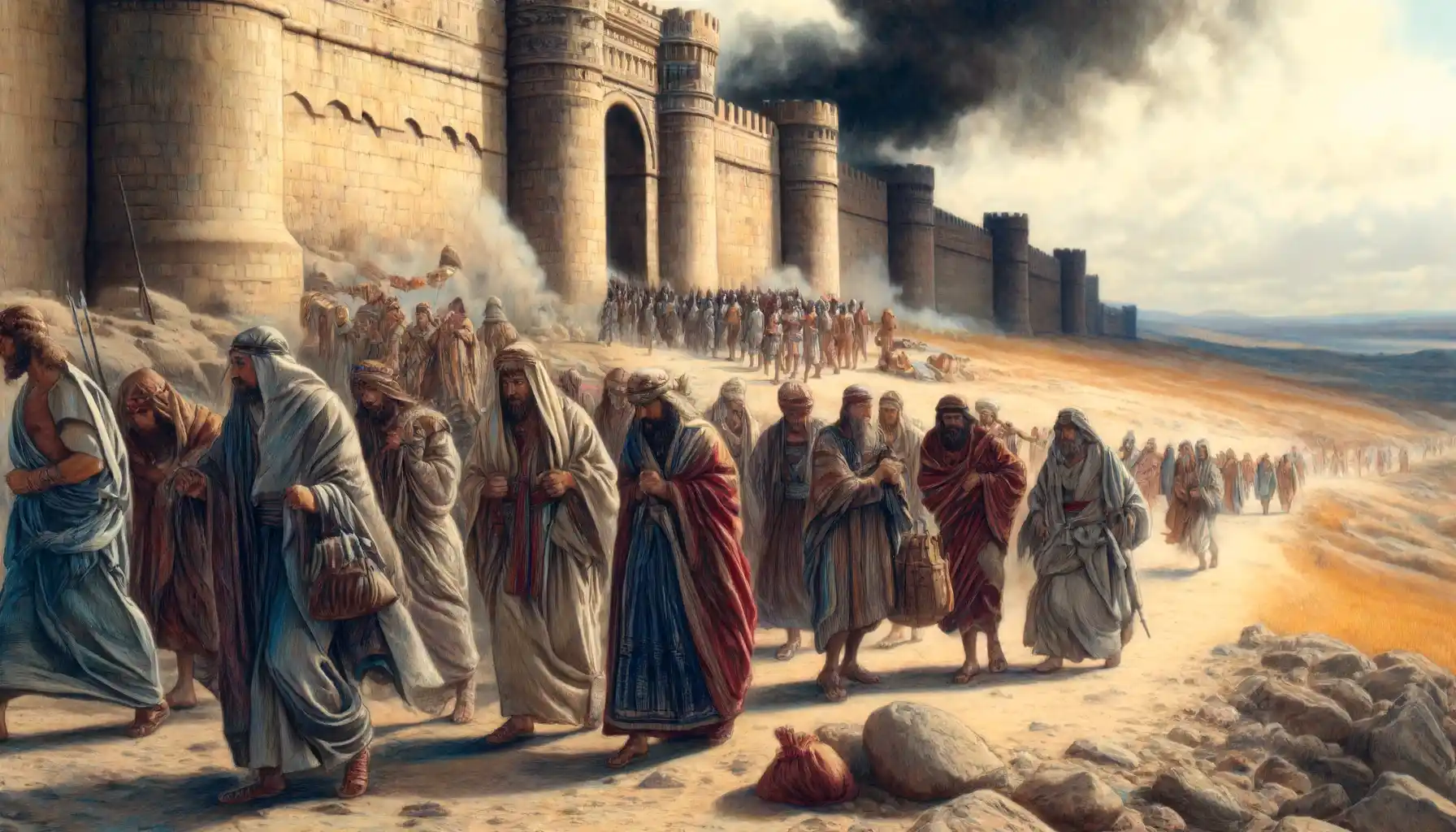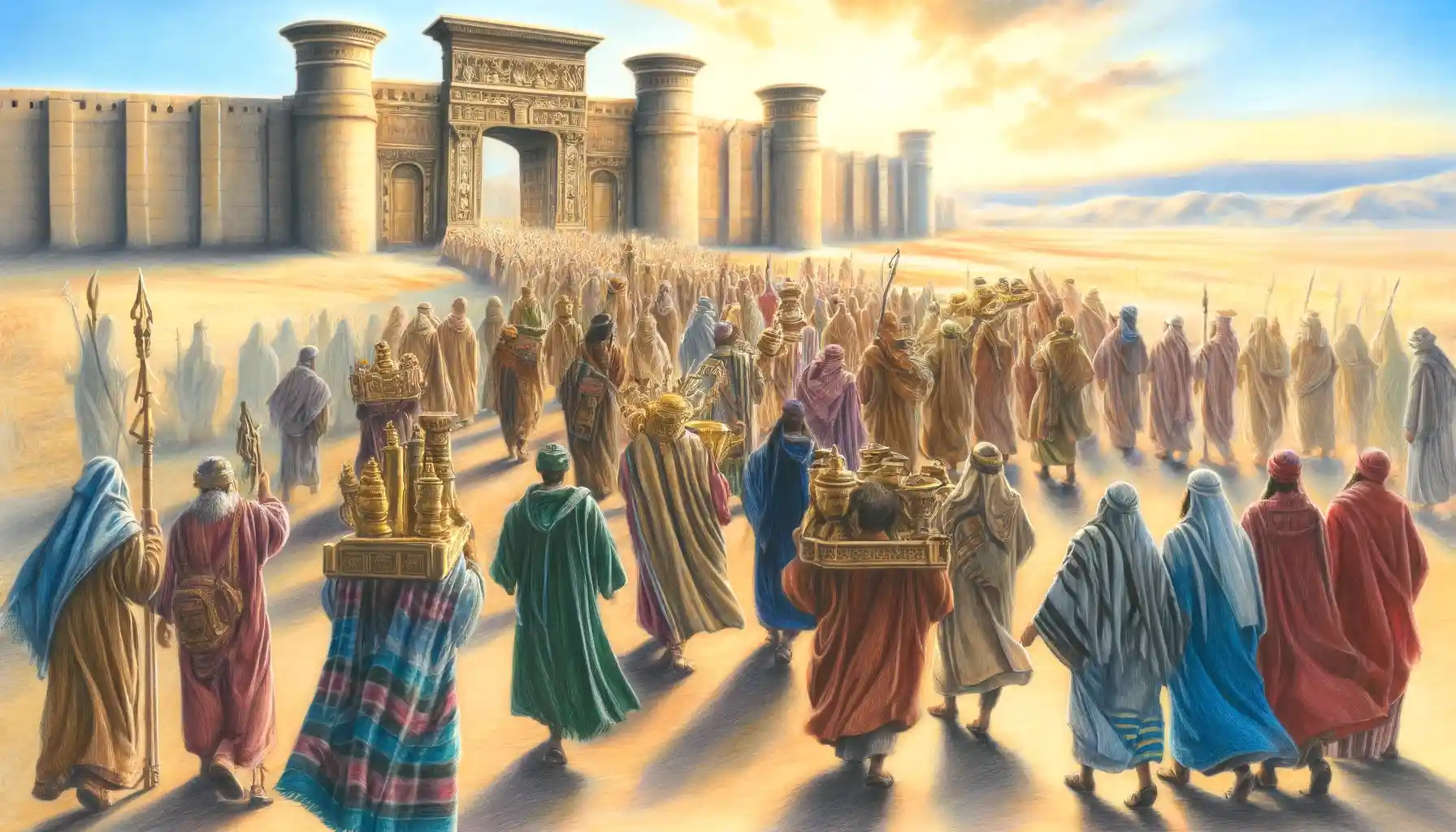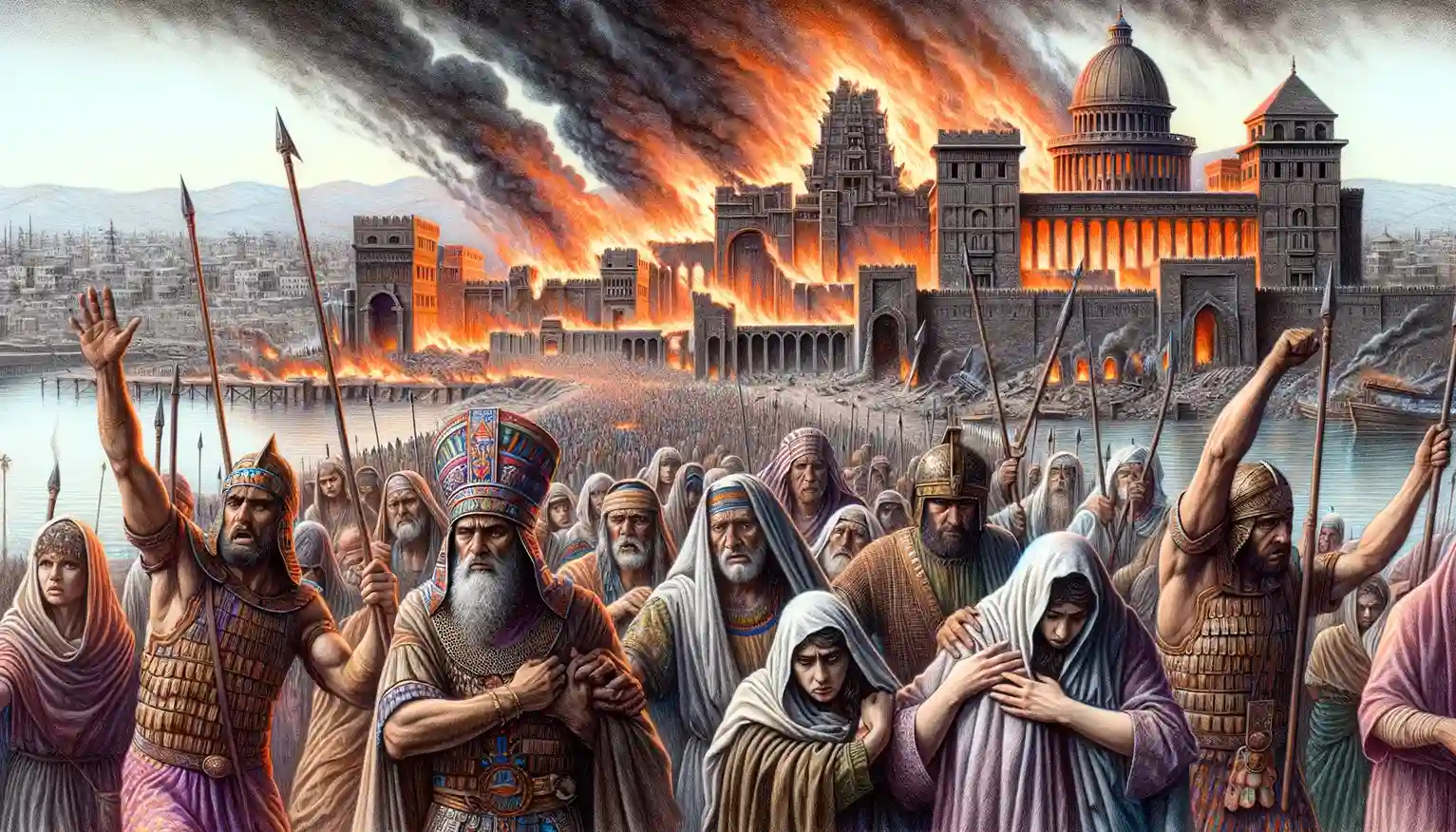Ebed-Melech, an Ethiopian eunuch in King Zedekiah’s service, bravely rescued the prophet Jeremiah from a cistern, demonstrating profound faith, compassion, and courage, which God rewarded with a promise of safety.
Babylon, located in ancient Mesopotamia, is historically significant as the site of the Jewish exile. This event, known as the Babylonian Captivity, had a profound impact on Jewish history, culture, and religious practices, shaping the development of Judaism.
In 2 Kings 25:1-21, the Exile of Judah is described, highlighting the Babylonian siege of Jerusalem, the capture and blinding of King Zedekiah, the destruction of the city and the Temple, the looting of Temple treasures, and the exile of the people to Babylon, marking the end of the Kingdom of Judah.
In Ezra 1:1-11, the decree of King Cyrus of Persia marks the end of the Babylonian exile for the Jews, authorizing their return to Jerusalem to rebuild the Temple and restoring the sacred vessels taken by Nebuchadnezzar, signifying a major restoration of Jewish life and worship after decades of captivity.
The Babylonian Captivity, which began with Nebuchadnezzar II’s destruction of Jerusalem and its temple in 586 B.C., was a pivotal 70-year period during which the Jewish people were exiled to Babylon, marking a time of profound theological reflection and transformation that emphasized the importance of the Torah and led to significant developments in Jewish identity and religion, culminating in their return to Jerusalem under Cyrus the Great’s decree in 538 B.C.
The Book of Lamentations is a profound biblical collection of poetic laments, expressing deep sorrow and seeking divine mercy for the destruction of Jerusalem and the suffering of its people due to their sins and subsequent divine judgment.

